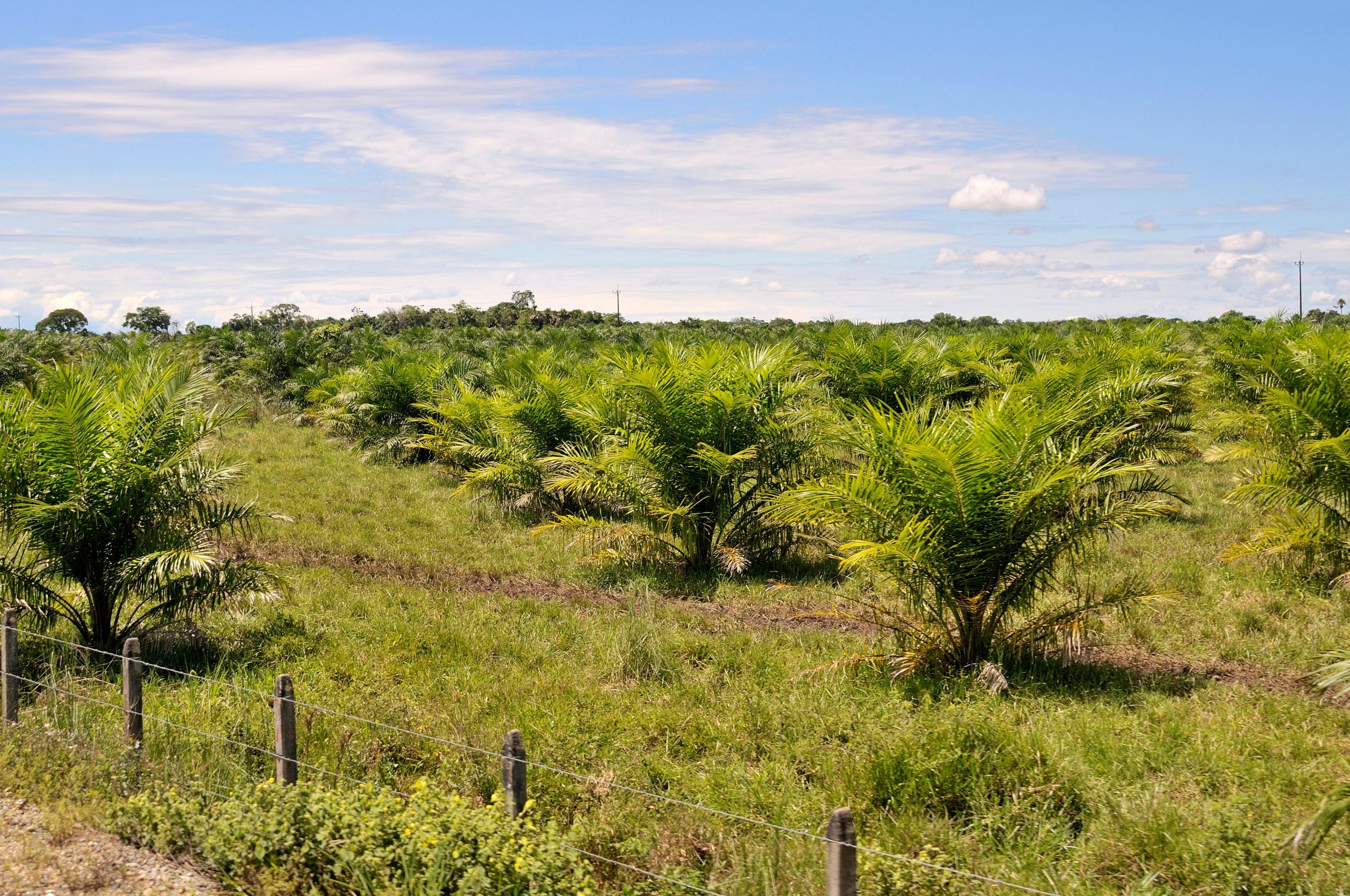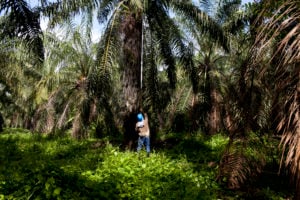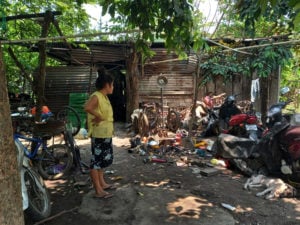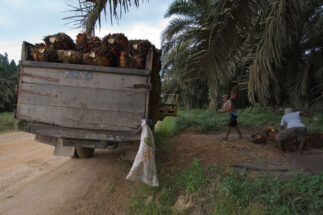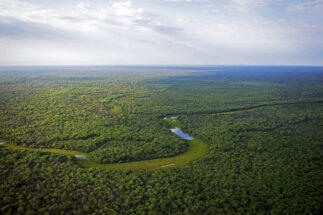Oil palm was first was first planted in Colombia in the 1930s, and since commercial crop operations began to take off mid-century, the country has grown into the world’s fourth largest producer and exporter of palm oil, and the largest in the Americas.
But much like in other leading palm nations, such as top producers Indonesia and Malaysia, the crop’s expansion has often come with controversy, and social and environmental costs. In Colombia, these impacts may compound existing problems of inadequate infrastructure, deforestation and land grabbing, as well as insecurity due to the presence of armed groups and illicit drug crops.
28%
of palm oil produced in Colombia in 2020 complied with one form of international sustainability certification, according to Fedepalma
The paradox is that while Colombia faces its own endemic challenges, it has also managed to create a situation where much of its oil palm grows sustainably. This has allowed it to make strong inroads into markets with a high demand for sustainable palm oil, such as the European Union – the destination for 61% of the South American country’s palm exports in 2020. It has seen a seemingly unlikely success, but as production continues to grow, industry and authorities face a number of challenges that must be carefully managed to ensure sustainability.
An unlikely success?
Colombia has experienced more than 50 years of complex, violent conflict involving the state, right-wing paramilitary groups, criminal gangs and revolutionary guerrillas, such as the demobilised FARC – whose splinter groups still operate – and the National Liberation Army, the last recognised guerrilla group. Despite difficulties in the Colombian countryside amid this conflict, palm oil production has expanded while offering some answer to the global question of how to grow sustainably.
Around 28% of Colombia’s production complies with one type of certification standard (such as the those of the Roundtable on Sustainable Palm Oil or Rainforest Alliance) making it the leading exporter of sustainable oil palm in Latin America.
One of the particularities that plays in Colombia’s favour is the country’s historical land use. Much oil palm in the country has been planted in areas that had been deforested for many years already, avoiding further land conversion – one of the key concerns around the environmental impact of the crop’s expansion.
“[Oil palm] replaced a lot of cattle pastures, so the impact it has had on ecosystems has been minimal. What was there before was not good for biodiversity anyway,” said Natalia Ocampo-Peñuela, a conservation ecologist and researcher at ETH Zurich, a Swiss public university.
The availability of this land has been favourable to sustainable expansion of the industry, with this cause helped by increased efforts in the past decade to monitor palm cultivation links with deforestation, such as the palm maps produced by the Institute of Hydrology, Meteorology and Environmental Studies (IDEAM), a government agency. The institute provides deforestation maps and an inventory of legal and illegal crops, with the help of the Agustín Codazzi Geographic Institute, the country’s official cartographer.
Another institution that monitors the crop’s cultivation in Colombia is Fedepalma: a federation that brings together the majority of the country’s palm growers. A powerful union created in 1962, it offers technical, technological and financial support to growers, and helps them achieve international certification. In 2017, Fedepalma signed a zero-deforestation agreement with several government ministries, an agreement to which it has since reiterated its commitment.
0.4%
of deforestation is linked to oil palm in Colombia, according to the Institute of Hydrology, Meteorology and Environmental Studies (IDEAM)
While Fedepalma has been criticised for overlooking smaller farmers, for becoming involved in legal conflicts over land and having a powerful lobbying capacity, it also facilitates the application and monitoring of public and trade union policies with a view to conservation agreements.
“Palm oil, like any other well-done crop, brings benefits to the natural environment and to the communities,” Andrés García Azuero, director of sectoral planning and sustainable development at Fedepalma, says. “Colombian palm farming respects the fauna and flora, which is integrated with the landscape, protecting the water courses, and that is what we promote and what differentiates us from other countries that produce palm oil.”
As an example of broader sustainability, García Azuero points to the country’s eastern plains, where deer and pumas are seen in palm “agro-ecosystems”, that contain a higher level of biodiversity than monoculture crop landscapes. However, Ocampo-Peñuela says that the mere presence of predators such as the puma does not guarantee that the species is using this habitat; “… rather, [it means] that it is passing through, and of course there is prey for them.” She does, however, temper this. “That doesn’t mean that a jaguar or a puma can survive in a palm plantation.”
In one of her studies, Ocampo-Peñuela found that in regions such as the foothills of the Orinoco basin in the country’s east, many of these crops have been beneficial because the palm growers leave forests around the rivers. “This is by law, but it has allowed species to survive,” she adds. These measures paint a different palm landscape to that of Asia, where other ecosystems are less often integrated, and crops appear as an infinite sea of green.
Threats remain
Of course, Colombia has not entirely escaped the negative ecological impacts frequently associated with oil palm expansion. These centre on the displacement of native tree species, and the increasing threat of pests.
As early as 1989, Rodrigo Bernal – perhaps the scientist and botanist who knows most about palms in Colombia – raised concern over the harms of the country’s growing palm industry. He points to the fate of the native tagua palm (Phytelephas tumacana), “which was once very abundant and formed the basis of the local economy, [but] has been razed to the ground to establish oil palm plantations, and is on the verge of extinction,” he wrote in his book Las palmas del andén del Pacífico.
Three decades later, Bernal says that there are at least three impacts that require serious studies and – if necessary – mitigation or compensation by the palm growers.
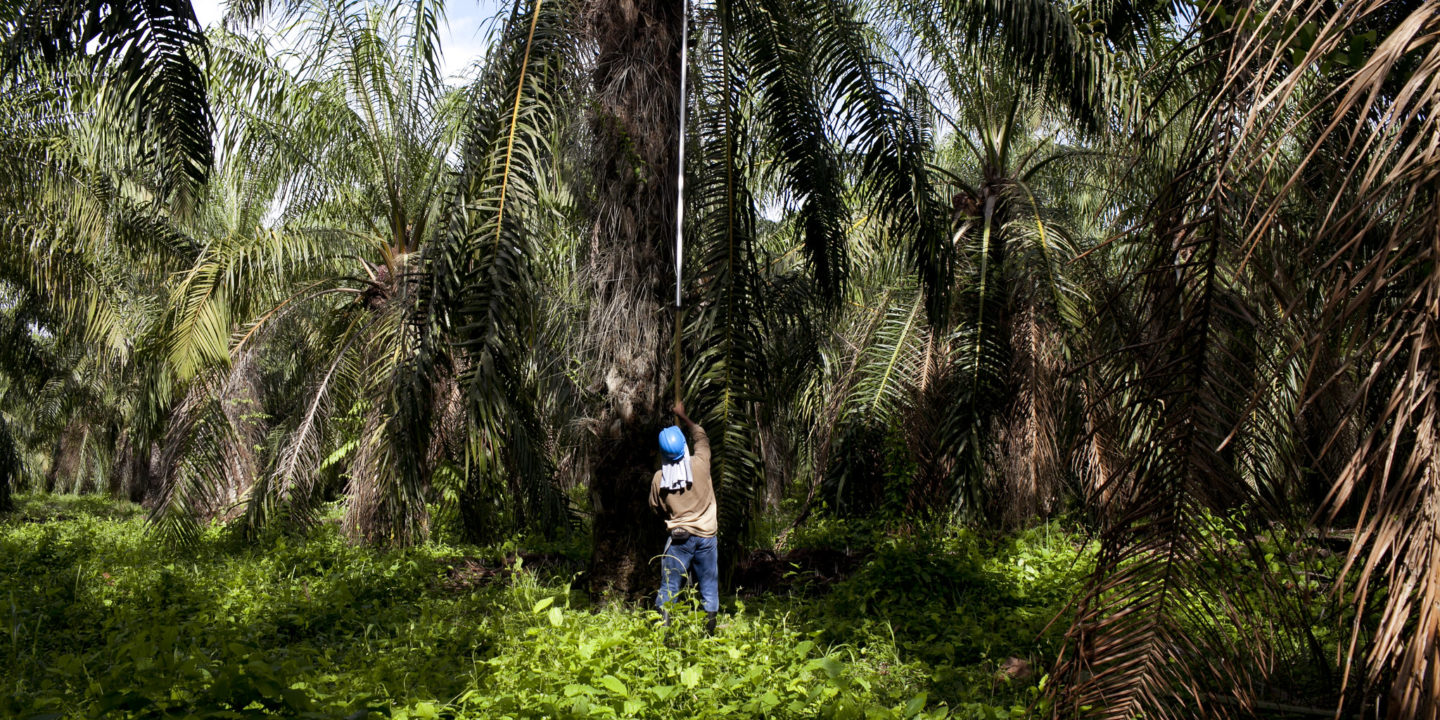
The first is the chance hybridisation between the African palm and the American oil palm, which “in some areas, such as the Magdalena valley, grew wild in areas that were used for plantations and now grows as isolated individuals in the surrounding areas”, he says.
The second is the potential of African oil palm as an invasive species. “I have observed African palm growing spontaneously in forests in the Magdalena Medio valley and around Leticia and Inírida,” Bernal says, highlighting three different corners of the country. “In Leticia [at the Amazonian border with Peru and Brazil], for example, it has invaded forests where, due to its large size, it probably displaces native species,” Bernal says.
And thirdly, there is the threat of the palm weevil, an insect originating in tropical Asia that may have arrived in western Colombia, “presumably as a result of the increase in African palm cultivation,” Bernal adds. This bug has already threatened crops such as the chontaduro, or peach palm, in Buenaventura on the Pacific coast, where they ended up eating a large part of the plantation.
Another sustainability challenge is the use of water. Oil palm is a notoriously thirsty crop grown in lowland and humid areas. In María la Baja, Bolívar department, for example, supply has become stressed in every dry season. “This can come into conflict with other crops and also with the water supply for people who live around these crops,” warns Ocampo-Peñuela. She adds that pesticides applied to oil palm can also affect the quality of water and irrigation for other crops in the area.
The view for the future
Any new palm cultivation planned in Colombia must be designed to have a positive impact on the environment, and this is precisely the challenge that Ocampo-Peñuela is working on. She is currently studying which characteristics of forests with a high density of palm are best for biodiversity. There are a number of key questions, she tells Diálogo Chino: “If you are going to design a palm plantation and you want to restore the ecosystem as well, what would that restoration strategy be and how should you plant those trees in the palm landscape? How far can a bird or a mammal move within the palm [plantation] to reach its other habitat or its other patch of forest?”
According to the International Union for the Conservation of Nature, alternative vegetable oils such as soybean, canola or sunflower need up to nine times more area to produce equivalent amounts of oil. This scenario is ideal for a Colombian palm agro-industry that still has huge potential areas for expansion – with as much as 44 million hectares of degraded land available, according to some claims.
However, this also entails a huge responsibility. Land conversion may not be necessary for the reasonable expansion of palm oil in Colombia, but the country and its producers must keep close tabs on other ecological challenges to ensure its good record on sustainability stays on track. And while nearly 30% of its current production meets sustainable certification, efforts to raise this percentage must continue, amid vertiginous global demand and growing ambition from palm oil businesses.
